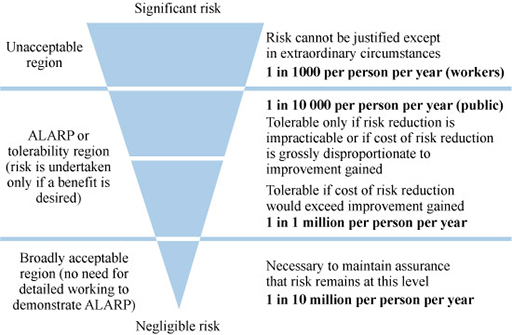ALARP
One concept of risk tolerability requires that measures be taken to reduce the likelihood of hazards and to limit their consequences until further reduction of risks cannot be justified. Putting it another way, the risks to individuals and to society should be as low as reasonably practicable (ALARP). When this approach was first developed in the area of pollution control in the UK in the 1860s, process operators had to use the best practicable means (BPM) to eliminate or control pollution. This concept was later adopted by the European Union as the principle of BATNEEC, or best available techniques not entailing excessive cost.
The principle of ALARP is illustrated in Figure 11, which indicates two regions of unacceptable and acceptable risk separated by a region where the risk is acceptable only in exceptional circumstances. The terms used (1 in 1000, etc.) are explained later in the course.
The core of ALARP is ‘reasonably practicable’; this involves weighing a risk against the trouble, time and money needed to control it. In some cases ‘good practice’ can be referred to, but in other situations deciding whether a risk is ALARP can be challenging, as it requires a degree of judgement as well as an economic evaluation.

